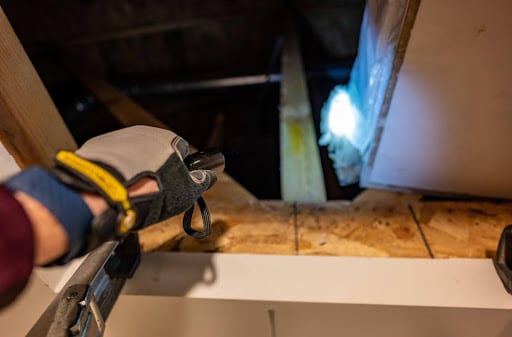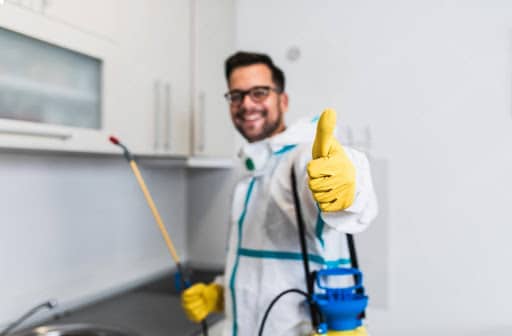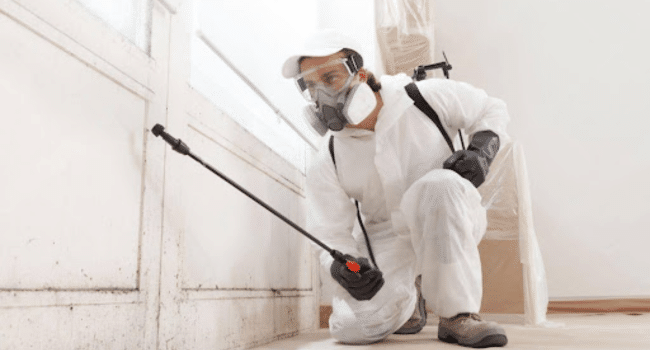Table of Contents
Picture this. It’s late at night, the house is quiet, and suddenly you hear a scratching sound coming from the attic. At first, you think it’s the wind. Maybe a tree branch. But then it happens again, louder this time. Before long, you’re lying there wide awake, realizing an uninvited guest may have just moved in above your head.
Wildlife damage isn’t something most homeowners think about until they’re already dealing with it. And by then, it’s not just noise keeping you up at night. It’s torn insulation, chewed wires, strange Odors, and the stress of not knowing what’s going on behind your walls.
Why Animals Love Your House
Let’s be honest: your home is inviting. It’s warm, dry, and safe from predators. If you’re a squirrel or raccoon, what’s not to love? Attics feel like hollow trees. Crawlspaces are dark and cozy. Even vents and chimneys can look like the perfect place to nest.
The trouble is, once they’re in, they don’t exactly follow house rules. Squirrels gnaw at wood and wires until they spark. Raccoons rip through shingles and insulation like paper. Bats leave droppings that carry disease and smell awful. Even the tiniest mouse can leave behind enough waste to contaminate food or cause health problems.
And it doesn’t take months for damage to pile up. Sometimes it’s just days. That is why you must get wildlife removal services in Columbia, SC, before any severe damage. Prevention is always better than a cure.
The Sneaky Ways They Get Inside
People are usually surprised when they find out how small an opening an animal really needs. A mouse can squeeze through a gap the size of your pinky finger. A bat can slip through cracks no wider than a pencil. And raccoons? If they want in, they’ll tear a bigger hole until they fit.
Common spots include loose shingles, attic vents, and soffits along the roofline. Basements and crawlspaces are another favourite. If there’s a broken screen or an unsealed pipe opening, that’s basically an invitation. Even garage doors that don’t sit flush to the ground can give snakes and rodents just enough room to slide through.
Walk around your house slowly one weekend, and you’ll likely notice little gaps or cracks you never paid attention to before. That’s where problems start.
What You Can Actually Do About It

Here’s the good news: keeping wildlife out doesn’t mean you need to turn your home into a fortress. Small, consistent steps make the biggest difference.
Start by sealing obvious openings. Don’t just stuff a rag in a hole and call it good; rodents will chew right through it. Use strong materials like steel mesh or flashing. For chimneys, a proper cap is worth every penny.
Next, look at your yard. Overhanging branches act like bridges, making it easy for squirrels to hop onto your roof. Trim them back so animals have a harder time reaching the house. Clean up woodpiles or debris near the foundation since those attract snakes and rodents looking for cover.
And let’s not forget food. Wildlife isn’t coming inside for fun; they’re looking for something to eat or somewhere to hide. Garbage cans without lids, bird feeders that spill seed, and even pet food left out overnight can lure animals close enough to start exploring your home.
Finally, check your attic and crawlspace occasionally. Even if you don’t hear noises, signs like droppings, shredded insulation, or a musky smell are red flags you shouldn’t ignore.
When You Need More Than DIY

Sometimes, despite your best efforts, you’ll still end up with unwanted guests. It happens. And honestly, this is where trying to handle things on your own can backfire. Wild animals get aggressive when cornered. Some carry diseases. Others, like bats, are protected by law, which means removing them incorrectly could land you in trouble.
Calling a professional isn’t about admitting defeat; it’s about making sure the problem is handled safely and permanently. Experts don’t just remove the animals; they figure out how they got in and fix it so you don’t have the same nightmare again three months later. Homeowners who’ve needed wildlife removal in Columbia, SC, for example, often find that the peace of mind afterward is worth far more than the cost of the visit. Here you can find them on Google Maps:
Final Thoughts
Wildlife damage is one of those problems that sneaks up on you. You don’t see it coming until it’s already loud, messy, and expensive. But the truth is, it’s avoidable. A few small habits, like sealing cracks, trimming trees, securing trash, and doing occasional inspections, can keep most animals from ever getting comfortable in your home.
And if one does slip in? Don’t panic, but don’t ignore it either. Deal with it quickly, and don’t be afraid to call in help when the situation calls for it.
At the end of the day, your home is your space, not a nesting ground. A little attention now saves you from big headaches later, and it keeps your nights quiet, without the sound of scratching overhead.
